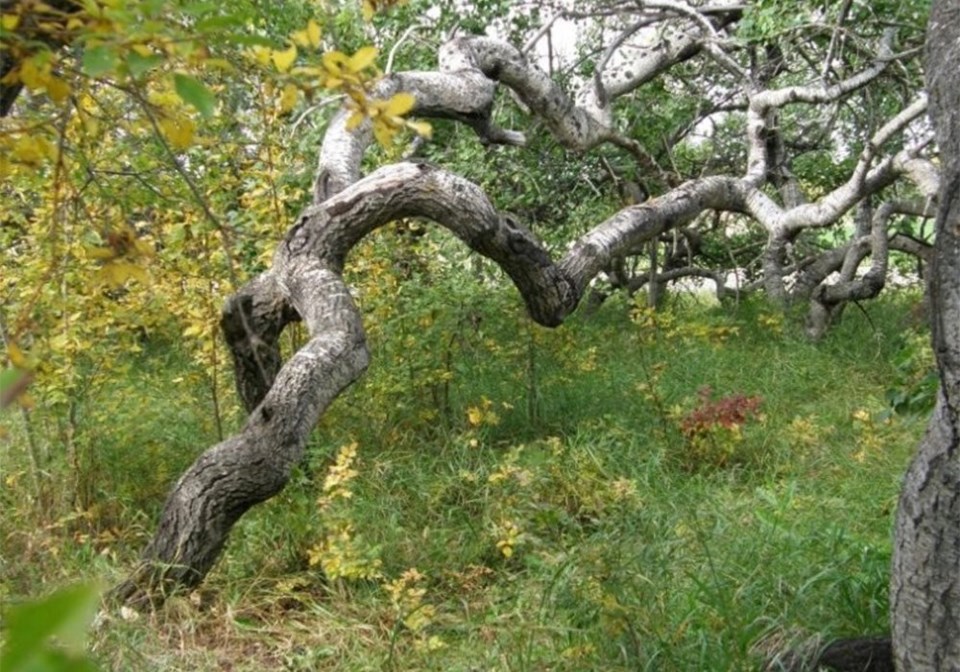HAFFORD, Sask. — The Prairies are brimming with natural wonders. I haven’t ticked many of them off my “to see” list, but the ones I have visited are amazing.
There are the Great Sand Hills of southwestern Saskatchewan, the sandstone formations near Roche Percee, Sask., and Saskatchewan’s oldest and largest tree, which is thought to be 160 years old and is 22 metres tall and five metres wide.
However, one of the most unusual natural wonders that I have had a chance to take a look at is the Crooked Bush near Hafford, Sask.
The branches of this small grove of aspen trees twist and turn in all directions, looking a bit like I would if I drank too much coffee.
Local legend has it that the deformities were caused by a lightning strike or a UFO landing, and some claim that cattle refuse to walk through the trees.
The more mundane scientific explanation is a genetic mutation, which may seem strange, considering so many trees are affected, but that’s where the unique nature of aspens comes into play.
Aspens don’t reproduce through seeds falling on the ground and taking root. Rather, they send out suckers underground that then grow into new “trees.”
Individual aspens typically live for 40 to 150 years, but the parent tree continues to shoot off new suckers, which allows the organism to live for thousands of years.
It also means that all of the “trees” seen in an aspen grove are part of one parent tree. And that probably explains the Crooked Bush of Hafford — one mutated aspen seed turned into an entire tangled grove.
This reproductive characteristic meansthat an entire aspen forest can be considered to be one tree, which would automatically put it at the top of any list of oldest and biggest trees.
By this reckoning, such a list could be topped by a 160-acre aspen grove in Utah’s Fishlake National Forest.
It comprises 40,000 individual “trees” that all originate from one parent.
Researchers first identified it in the 1970s and named it Pando, which is Latin for “I spread.”
It probably started at the end of the last ice age and is considered to be the world’s heaviest organism.
The natural world sure is an amazing place.

.JPG;w=120;h=80;mode=crop)


